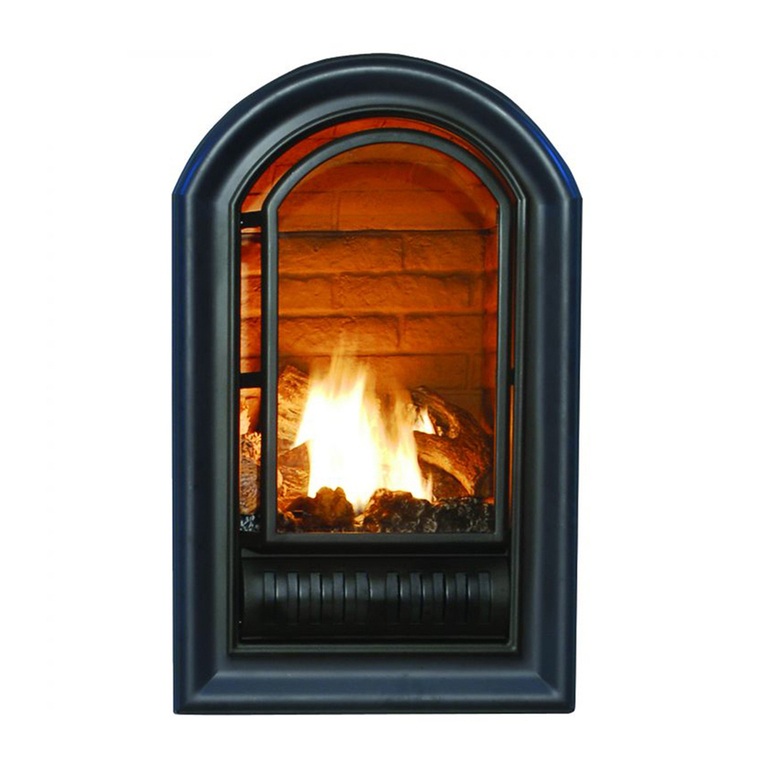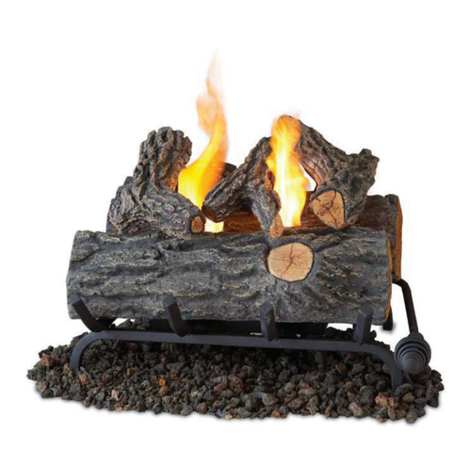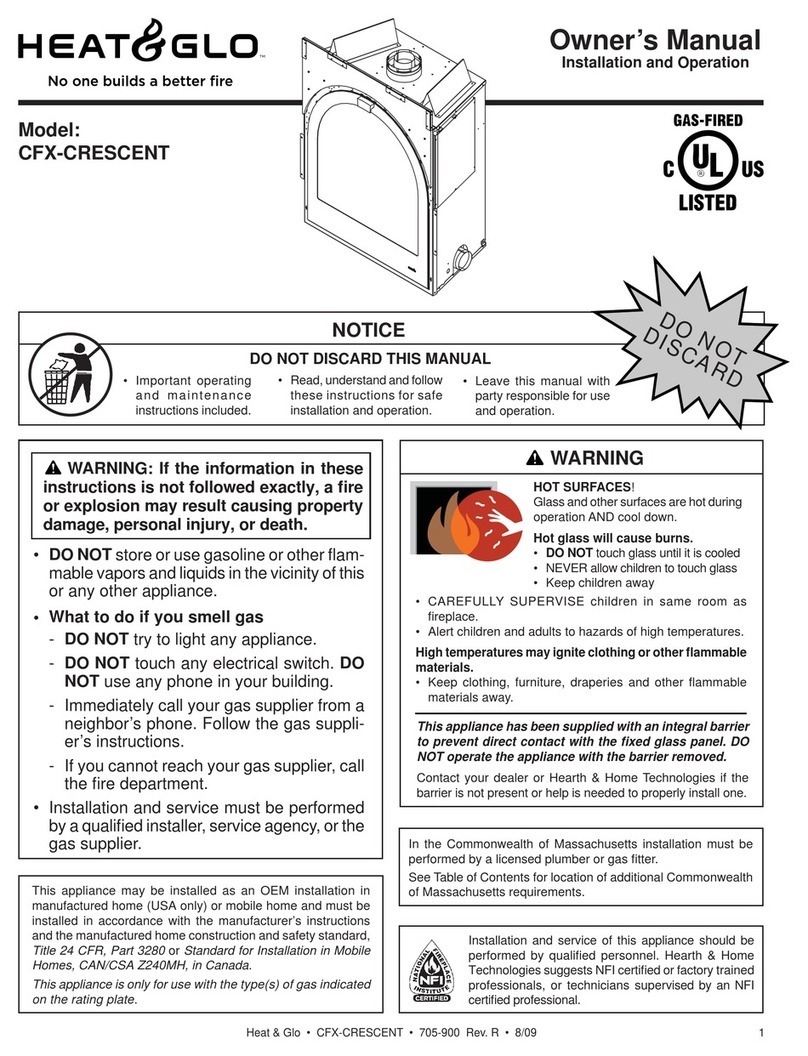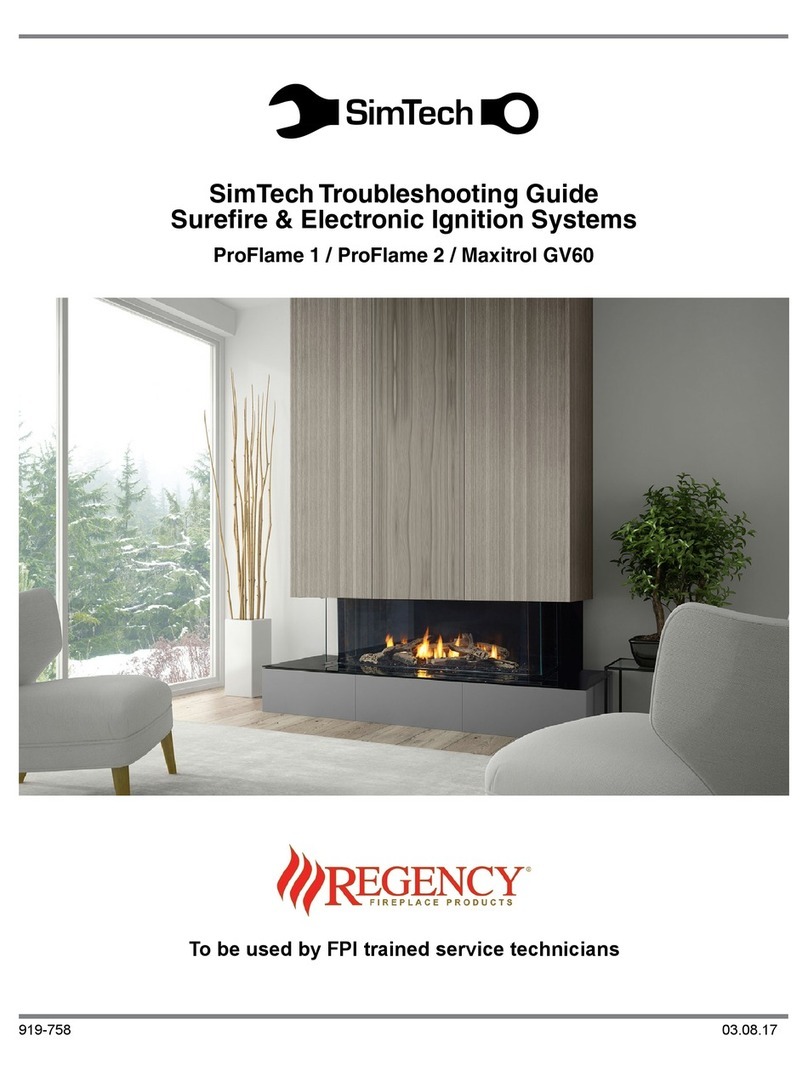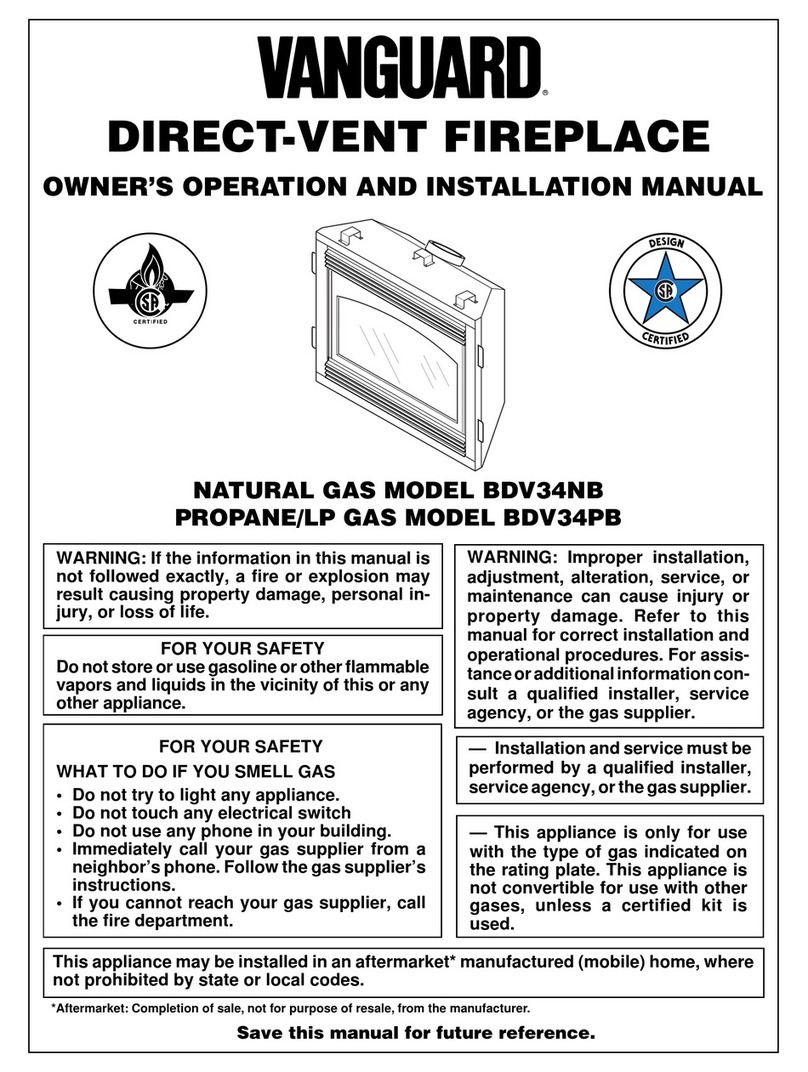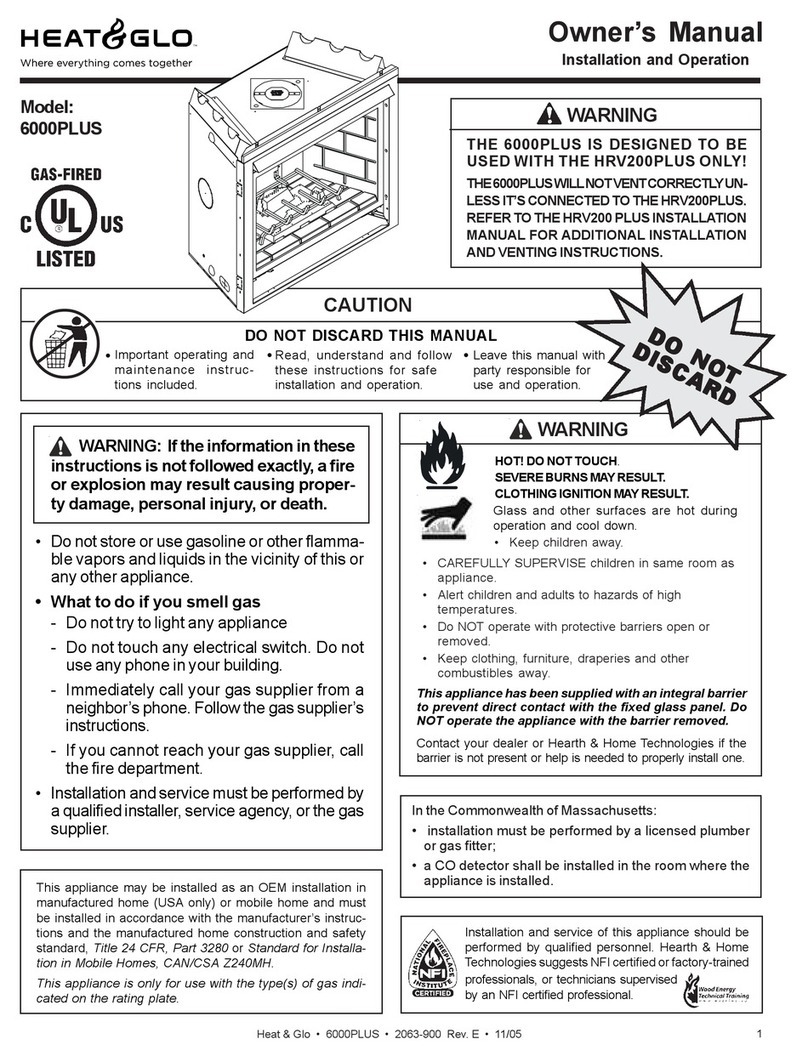Cadel ZEFIRO3 User guide

INSTALLER MANUAL
Pellet replace insert
EN
©2020 CADEL srl | All rights reserved - Tutti i diritti riservati
ZEFIRO3- ZEN AIRTIGHT

ZEFIRO3- ZEN AIRTIGHT
2
SUMMARY
1 MANUAL SIMBOLOGY....................................3
2 PACKAGING AND HANDLING..........................3
2.1 PACKAGING .............................................................3
2.2 REMOVINGTHE STOVE FROM THE PALLET..............3
2.3 STOVE HANDLING....................................................4
3 CHIMNEY FLUE ...........................................4
3.1 INTRODUCTION .......................................................4
3.2 CHIMNEY FLUE........................................................4
3.3 TECHNICAL FEATURES.............................................5
3.4 HEIGHTDEPRESSION..............................................6
3.5 MAINTENANCE........................................................6
3.6 CHIMNEY POT..........................................................6
3.7 CHIMNEY COMPONENTS.........................................7
3.8 CHIMNEY FLUE CONNECTION..................................7
3.9 EXAMPLES OF CORRECT INSTALLATION..................8
4 COMBUSTION AIR.......................................10
4.1 EXTERNAL AIR INLET.............................................10
4.2 COMBUSTIBLE AIR INLET FOR SEALEDCHAMBER
INSTALLATION .................................................................11
4.3 COMBUSTIBLE AIR INLET FOR SEALEDCHAMBER
INSTALLATION .................................................................11
5 INSTALLATION............................................12
5.1 INTRODUCTION .....................................................12
5.2 OVERALL DIMENSIONS .........................................12
5.3 GENERAL INSTALLATION.......................................13
5.4 INSERT EXTRACTION .............................................14
5.5 INSERT REMOVAL..................................................15
5.6 INSTALLATION WITH EXTERNAL COVER................16
5.7 INSTALLATION ON EXISTING FIREPLACE...............17
5.8 DOOR ADJUSTMENT..............................................18
5.9 ELECTRIC CONNECTION.........................................19
5.10 CONNECTION TO THE EXTERNAL THERMOSTAT.....19
5.11 AIR REGULATOR ....................................................20
5.12 INSERT LEGS INSTALLATION OPTIONAL.............20
5.13 HOT AIR DUCTING OPTIONAL.............................21
5.14 PELLET DRAWER INSTALLATION OPTIONAL.......24
5.15 TRAPDOOR INSTALLATION OPTIONAL................26
5.16 FRAME INSTALLATION OPTIONAL......................27
5.17 CONCENTRIC PIPE INSTALLATION OPTIONAL.....28
5.18 DISPLAY ROTATION ...............................................28
6 WIFI KIT INSTALLATION.............................29
7 SPECIAL MAINTENANCE ..............................30
7.1 INTRODUCTION .....................................................30
7.2 FEED SCREW MAINTENANCE.................................31
7.3 FLUE GAS EXTRACTOR CLEANING..........................31
7.4 FUME PIPES ANNUAL CLEANING .........................32
7.5 GASKET REPLACEMENT.........................................33
7.6 GLASS REPLACEMENT...........................................33
8 IN CASE OF ANOMALY..................................33
8.1 PROBLEM SOLVING ...............................................33
9 TECHNICAL DATAS ......................................36
9.1 FUSE REPLACEMENT .............................................36
9.2 FEATURES..............................................................37

3
ZEFIRO3- ZEN AIRTIGHT
1 MANUAL SIMBOLOGY
USER
AUTHORISED TECHNICIAN
(ONLY to interpret or the Stove-manufacturer or the Authorized Techni-
cian of Technical Assistance Service approved by the Stove-manufacturer)
SPECIALIZED STOVE-REPAIRER
CAUTION:
READ CAREFULLY THE NOTE
CAUTION:
DANGER OR IRREVERSIBLE DAMAGE POSSIBILITY
• The icons with the stylized figures indicates whom the subject dealt in the paragraph is addressed to (between the User and/
or the AuthorizedTechnician and/or the Specialized Stove-repairer).
• WARNING symbols indicates an important note.
2 PACKAGING AND HANDLING
2.1 PACKAGING
• The packaging is made up of recyclable cardboard boxes according to RESY standards, recyclable expanded polystyrene inserts
and wooden pallets.
• All packaging materials can be re-used for a similar use or eventually discharged as waste assimilable to the municipal solid
ones, in accordance with current regulations.
• After having removed the packaging please assure you about the integrity of the product.
2.2 REMOVING THE STOVE FROM THE PALLET
Proceed as follows to remove the stove from the pallet:
Fig. 1 - Screw removal

ZEFIRO3- ZEN AIRTIGHT
4
• Slightly pull out the machine body from the structure (see INSERT EXTRACTION a pag. 14)
• Remove the screws fixed to the base of the insert (see Fig. 1) and then remove it from the pallet.
2.3 STOVE HANDLING
Both whether the stove is packed or not it is necessary to observe the following instructions for handling and transporting the
stove from its sale point to its installation point and for any future movements:
• The stove must be handled with idoneous means paying attention to the existing safety regulations;
• do not turn the stove upside down and/or upset it on one side, but keep it in vertical position or as accorded with the construc-
tor instructions;
• if the stove is made up of ceramic, stone, glass or any particularly fragile material components, all must be moved with the
utmost care.
3 CHIMNEY FLUE
3.1 INTRODUCTION
This chapter about the Chimney Flue has been drawn up in cooperation with Assocosma (www.assocosma.org) and is based on
European Standards (EN 15287 - EN 13384 - EN 1856 - EN 1443) and UNI 10683:2012.
It provides instructions for a good and correct execution of the chimney flue but it does not absolutely replace the current stan-
dards which the qualified manufacturer/installer should comply with.
3.2 CHIMNEY FLUE
Fig. 2 - Chimney Flues
LEGEND Fig. 2
1Chimney flue with insulated stainless-steel pipes
2Chimney flue on the existing chimney
3Inspection plug
4Inspection door
5≥ 3,5 mt
• The chimney flue or chimney is of great importance for the correct running of the heating appliance.
• It is fundamental that the chimney flue is perfectly built and always maintained with a perfect efficiency.
• The chimney flue must be sole (see Fig. 2) with insulated stainless-steel pipes (1) or installed on the existing chimney flue (2).

5
ZEFIRO3- ZEN AIRTIGHT
• Both this solutions must be endowed with an inspection plug (3) and/or an inspection door (4).
3.3 TECHNICAL FEATURES
Fig. 3 - Inclined roof
LEGEND Fig. 3
1Height over the ridge of the roof = 0,5 mt
2Roof inclination ≥ 10°
390°
4Measured distance at 90° from the roof surface = 1,3 mt
• The chimney flue must be sealed from fumes.
• It must have a vertical run without narrowing. It must be realized with fume and condensation resistant materials with ther-
mal insulation and able to last against usual mechanical stresses.
It must be insulated to avoid condensation and to reduce fume cooling effects.
• The stove must be spaced out from fuels or flammable materials with an air gap or with insulating materials. Check the distan-
ce with the chimney manufacturer.
• The chimney entrance must be placed in the same room where the appliance is installed or otherwise in the adjacent room
and it must be provided with a solid and condensation collection chamber under the entrance, accessible through the sealed
metal gate.
• Auxiliary exhaust fans cannot be installed neither along the chimney nor on the chimney pot.
• The inner section of the chimney flue can be round (the best one) or square and the jointed sides must have a minimum radius
of 20 mm.
• The section dimension must be:
•minimun Ø100 mm
•recommended max Ø180 mm
• Made the efficiency of the chimney flue overhauled by an expert stove-repairer and if necessary cover the chimney flue with
materials in compliance with current regulations.
• The flue system must be placed on the roof.
• The chimney flue must be provided CE in accordance with EN 1443 regulation. Please find attached an example of label:

ZEFIRO3- ZEN AIRTIGHT
6
Fig. 4 - Example of label
3.4 HEIGHTDEPRESSION
The depression (draught) of a chimney flue depends also on its height. Check the depression with the values provided at FEATU-
RES a pag. 37. Minimum height 3,5 meters.
3.5 MAINTENANCE
• The fumes extraction pipes (fumes conduit + chimney flue + chimney pot) must always be cleaned, scrubbed and checked
by an expert stove-repairer, in compliance with current regulations, with the instructions of the stove-manufacturer and the
directives of your insurance company.
• In case of doubts, please follow the most restrictive regulations.
• Have your chimney flue and chimney pot checked and cleaned by an expert chimney sweep at least once a week.The chimney
sweep has to release a written declaration about the security of the system.
• Not cleaning compromise safety.
3.6 CHIMNEY POT
Fig. 5 - Anti-wind chimney pots
The chimney pot is important for the correct running of the heating appliance:
• We recommend using an anti-wind chimney pot, see Fig. 5.
• The hole width for fumes exhaust must be the double of the chimney flue width and fitted in a way that the fume exhaust is
assured also in case of wind.
• It should prevent the infiltration of rain, snow and animals.
• The outlet height in the atmosphere must be away from the reflux area caused by the roof structure or by obstacles laying
nearby (see Fig. 3).

7
ZEFIRO3- ZEN AIRTIGHT
3.7 CHIMNEY COMPONENTS
Fig. 6 - Chimney components
LEGEND Fig. 6
1Chimney pot
2Fume outlet
3Chimney flue
4Termal insulation
5External wall
6Chimney union
7Fume pipe
8Heat generator
9Inspection door
10 T-union with inspection plug
3.8 CHIMNEY FLUE CONNECTION
Your pellet stove works through a fume draught forced by a fan. It is obligatory to check that all pipes are realized in compliance
with the following regulation on material selection: EN 1856-1, EN 1856-2 e UNI/TS 11278. All must be effected by specialized
personnel or companies as provided by UNI 10683:2012.
• The connection between the appliance and the chimney flue should be short in order to favor the draught and to avoid con-
densation in the pipes.
• The fume conduit should be equivalent or longer than the outlet joint ones (Ø 80 mm).
• Some stove models are endowed with a lateral and/or back exhaust. Check that the unused exhaust is sealed with the plug
given with standard equipment.
SYSTEM TYPE Ø80 mm PIPE Ø100 mm PIPE
Minimum vertical length 1,5 mt 2 mt
Maximum length (with 1 union) 6,5 mt 10 mt

ZEFIRO3- ZEN AIRTIGHT
8
SYSTEM TYPE Ø80 mm PIPE Ø100 mm PIPE
Maximum length (with 3 unions) 4,5 mt 8 mt
Maximum number of unions 3 3
Level section (minimum inclination 3%) 2 mt 2 mt
Installation at a height above 1200 m a.s.l. NO Obligatory
• Use a plate pipe for stoves of Ø80 mm or Ø100 mm depending on the type of system and with silicone gaskets.
• It is forbidden to use metal, fibre cement or aluminium flexible pipes.
• For change of direction it is obligatory always to use a union (with angle > 90°) with inspection plug which enables an easy
periodic cleaning of the pipes.
• Please assure you that after the cleaning the inspection plugs are sealed with its efficient gasket.
• It is forbidden to exhaust flue gases directly from the wall towards the outside and closed spaces also at open top.
• The fume conduit must be placed at a distance of minimum 500 mm from flammable or heat-susceptible components.
• It is prohibited to connect more than one wood/pellet (*) or any other type of appliance (vent cowling...) to the same flue.
(*) unless there are national derogations (for instance in Germany), which under suitable conditions allow for the installation of
several appliances in the same fireplace. In any case, strictly follow the product/installation requirements of the relative regulations/
legislation in force in that country.
3.9 EXAMPLES OF CORRECT INSTALLATION
Fig. 7 - Example 1
LEGEND Fig. 7
1Insulating material
2Reduction from Ø100 to Ø80 mm
3Inspection plug
4Minimum safety distance = 0,5 mt
• Chimney flue installation Ø100/120 mm with an enlarged drilling for pipe transit.

9
ZEFIRO3- ZEN AIRTIGHT
Fig. 8 - Example 2
LEGEND Fig. 8
1Insulating material
2Inspection plug
3Chimney inspection entrance
4Minimum safety distance = 0,5 mt
5Inclination ≥ 3°
6Level section ≤ 1 mt
• Old chimney flue with an inserted pipe of minimum Ø100/120 mm and with an external door which enables the chimney
cleaning.
Fig. 9 - Example 3
LEGEND Fig. 9
1Insulating material
2Inspection plug
3Minimum safety distance = 0,5 mt
• External chimney flue entirely made up of insulated stainless steel pipes, i.e. with double wall of minimum Ø100/120 mm: all
must be firmly attached to the wall. For chimney against wind effects please (see Fig. 5).
• Ducting system through T-unions which enables an easy cleaning without disassembling the pipes.

ZEFIRO3- ZEN AIRTIGHT
10
We recommend to check with your chimney flue manufacturer the safety distances which must be respected
and the type of insulating material. The aforesaid regulations are valid also for holes made on the wall (EN
13501 - EN 13063 - EN 1856 - EN 1806 - EN 15827).
4 COMBUSTION AIR
4.1 EXTERNAL AIR INLET
Fig. 10 - Direct air inow
LEGEND Fig. 10
1Room to ventilate
2External air inlet
• The room must be endowed with an external air recycling for a good climate in your ambient.
• The air inflow from outside to the inner occurs directly, through an opening on the external wall of the room (see Fig. 10).
• Bedrooms, garages, and store of flammable materials are excluded.
• The air inlet should have a total net surface of 80 sqcm2: the aforesaid surface is to widen if inside the room there are other
activated appliances (for example: electric ventilators for foul air suction, cooker hoods, other stoves, etc...) which depress the
environment.
• At switched on appliance it is necessary to check that the pressure fall between the room and the outside does not exceed 4,0
Pa value: if necessary widen the air inlet (EN 13384).
• The air inlet must be realized at a height close to the floor with an external grid against birds. In such a way it cannot be ob-
structed by any object.
• In case of installation with sealed-chamber the air inlet is not necessary.

11
ZEFIRO3- ZEN AIRTIGHT
4.2 COMBUSTIBLE AIR INLET FOR SEALEDCHAMBER INSTALLATION
Fig. 11 - Air inlet for sealed-chamber installation
LEGEND Fig. 11
1≥ 1,5 mt
2≥ 0,3 mt
3-3 Sectional view
4Shield grid
5Curve inlet to turn downwards
Check if the purchased stove has a sealed-chamber. If the stove is endowed with a sealed-chamber and you want also the whole
installation with sealed chamber, please read the following instructions:
• It is necessary to extract the air for combustion directly from outside.
• Use a tube with minimum Ø60 mm and maximum 2 meters lenght; to connect see the back of the stove.
• French standards require installation in double-walled flues (concentric system). The combustion air is drawn from the cavity.
• During installation step is necessary to verify the minimum distances required for the combustible air inlet as (for example) an
open door or window causes a vortex which could remove the combustible air necessary to the stove (see the underlying scheme).
• On the external wall it is necessary to install a curve at 90° to protect the combustible air inflow from wind effects: turn the
curve inlet downwards, see Fig. 11.
• Endow the curve with an external shield grid against birds in such a way that it cannot be obstructed by any object.
Check with your local authorities if exists any restrictive regulation regarding the combustible air inlet: if pre-
sent, they must be applied
In some countries and/or regions the installation with sealed-chamber is obligatory: in case of doubt, please
follow the most restrictive regulations.
4.3 COMBUSTIBLE AIR INLET FOR SEALEDCHAMBER INSTALLATION
How to connect to the stove in the sealed chamber with concentric system:

ZEFIRO3- ZEN AIRTIGHT
12
Fig. 12 - Phase1 Fig. 13 - Phase 2 Fig. 14 - Phase 3
• Remove the ring inside the combustion air fitting (see Fig. 12 and Fig. 13).
• Insert the concentric pipe as in Fig. 14.
5 INSTALLATION
5.1 INTRODUCTION
• The assembly position must be chosen depending on environment, outlet, chimney flue.
• Check with local authorities if there are any restrictive regulations which regard the combustible air inlet, room ventilation,
fume exhaust system together with chimney flue and chimney pot.
• Check if there is the combustible air inlet.
• Check the probable presence of other stoves or appliances which could depress the room.
• Check at switched on stove if there is the presence of CO in the room.
• Check if the chimney has the necessary draught.
• Check if during the fume passage all has been executed in safety (probable fume losses and distances from flammable mate-
rials, etc.…).
• The installation of the appliance must enable an easy access for appliance, fume exhaust pipes and chimney flue cleaning.
• The installation must enable en easy access to the electric connection plug (see ELECTRIC CONNECTION a pag. 19).
• To install more appliances, the external air inlet must be correctly dimensioned (see FEATURES a pag. 37).
5.2 OVERALL DIMENSIONS
Fig. 15 - General dimensions: Zero3, Zen Airtight
LEGEND Fig. 15
169,7 cm
249 cm

13
ZEFIRO3- ZEN AIRTIGHT
LEGEND Fig. 15
355 cm
46,2 cm
517,7 cm
66,1 cm
749,4 cm
825,8 cm
914,5 cm
10 Exhaust fumes d.8 cm
11 Hole combustion air inlet d.6 cm
12 Hot air outlet 18x3 cm
13 Ducting outlet d.8 cm (optional)
14 37,7 cm
15 27,2 cm
16 7,5 cm
17 54÷72 cm
5.3 GENERAL INSTALLATION
Fig. 16 - General installation
LEGEND Fig. 16
1Fireplace insert
2Minimum lateral distance = 240 mm
3Minimum rear distance = 190 mm
4Minimum front distance = 1000 mm
5Minimum thickness of insulating material = 40 mm
• Please check that the floor has an adequate load capacity. If the existing one does not satisfy this requirement, appropriate
measure should be provided (for example a plate for distributing the load).
• It is obligatory to install the stove away from walls and/or pieces of furniture, with a minimum air flow of 240 mm on the sides
and 190 mm on the back, to enable an eficient appliance cooling and a good distribution of heat in the room (see Fig. 16).
• For safety fire regulations the distances from flammable or sensible to heat objects (sofas, pieces of furniture, wooden cove-
ring, etc...) must be respected, has described in Fig. 16.
The probable insulating material to use must have the following technical features:
DESCRIPTION VALUE
Material thickness 40 mm

ZEFIRO3- ZEN AIRTIGHT
14
DESCRIPTION VALUE
Screening temperature 1000 °C
Density 245 Kg/m3
Shrinkage at referring temperature (12h) 1,3 % /1000 °C
Cold crushing strenght 1,4 MPa
Bending strenght 0,5 MPa
Thermal expansion coefficient 5,4x10-6 m/mK
Specific heat 1,03 Kj/kgK
Thermal conductivity at medium temperature
200 °C 0,07 W/mK
400 °C 0,10 W/mK
600 °C 0,14 W/mK
800 °C 0,17 W/mK
• If there are highly flammable objects (curtains, fitted carpet, etc...), all these distances must be further increased with 1 meter.
• If the floor is made up of flammable material two solutions are possible:
•build a protection (steel plate, refractory, marble...) made up of no flammable material;
•otherwise the insert must be raised at a minimum height of 200mm from the floor (adjusting legs' lenght).
• If the walls are made up of flammable materials, check the safety distances (see Fig. 16).
• At maximum power check that the wall temperature does not ever exceed 80°C. If it would be necessary please install a fire
resistant plate on the concerned walls.
• In some countries also masonring load-bearing walls are considered flammable.
5.4 INSERT EXTRACTION
The insert is composed of:
Fig. 17 - Structure + machine body
Key Fig. 17
1Structure
2Machine body
Proceed as follows to extract the insert:
• Open the door.

15
ZEFIRO3- ZEN AIRTIGHT
• Lift the hook (vedi Fig. 18) and pull the machine body firmly towards you (see Fig. 19).
• Once the machine body has been extracted, you can access the pellet tank.
Fig. 18 - Lift hook Fig. 19 - Machine body extraction
5.5 INSERT REMOVAL
If the insert is inserted on the guides, there is a danger of tipping over!
Assembly operations must always be carried out by 2 people!
• Pull out the machine body from the structure (see INSERT EXTRACTION a pag. 14).
• Loosen the 2 hex screws on both sides of the insert (see Fig. 20).
• Lift the safety plate locking the guide open (see Fig. 21).
Fig. 20 - Loosen screws Fig. 21 - Lift locking plate
• Using the supplied handles (see Fig. 22) place them in the appropriate seats (see Fig. 23) and remove the machine body from
the guides.
• To reassemble it proceed in reverse order.

ZEFIRO3- ZEN AIRTIGHT
16
Fig. 22 - Handle Fig. 23 - Machine body removal
5.6 INSTALLATION WITH EXTERNAL COVER
• It is possible to cover the insert with your liking cover respecting the correct execution as described in GENERAL INSTALLA-
TION a pag. 13 and following the under mentioned instructions.
• Fix the legs (optional) to the floor and lift the insert frame till the desired height by adjusting the legs and then block it with
screws on the fitting guides.
• It is obligatory to fix the supporting frame legs at the base with metal plugs able to bear a weight of 50 kg for leg.
In case of insert extraction fixed on guides there is the risk of overturning!
Check if the insert frame is fixed to the floor.
Fig. 24 - Installation with cover
LEGEND Fig. 24
1Ceiling to protect

17
ZEFIRO3- ZEN AIRTIGHT
LEGEND Fig. 24
2Ceiling plaster to protect from heat
3Ventilation grid with a minimum entrance of 400 cm2for natural hot convective air outlet
4Self-supporting metal frame
5Combustible air outlet
6Pellet load entrance
7Lower air grid with a minimum entrance of 400 cm2for natural cool convective air inlet
8Floor protecting plate
9Outlet clutch Ø80 mm
10 Fume pipe Ø80 mm with a minimum vertical lenght of 1 mt
11 Chimney flue of minimum Ø120 mm
12 Sealed chimney flue's inspection door
13 Wall
14 Floor
15 Ceiling with wooden beam
16 Fireplace insert
17 Insulating between wall and fume pipe of minimum 200 mm on the whole diameter
18 Combustible air inlet
19 Minimum distance between the wooden beams and the fume pipe = 0,5 mt
• Build a metal frame for supporting cover panels (4).
• Do not discharge the metal structure weight on the insert frame.
• Cover the metal frame with panels made up of no flammable materials.
Made a cleft of min. 400 cm2on the lower (7) and upper (3) parts of the panels for the inner air recycling.
• The pellet loading can occur by extracting the insert at switched off appliance, otherwise through the installation of a loading
trap door (6).
• The loading trap door can be frontally or laterally installed, extending the flexible pipe Ø160 mm according to your needs.
5.7 INSTALLATION ON EXISTING FIREPLACE
• It is possible to build the insert into an existing fireplace respecting the distances and the correct execution as described by
GENERAL INSTALLATION a pag. 13 and following the below mentioned instructions.
• Fix the legs (optional) at the lowest height and block them with screws on its fitting guides.
• It is obligatory to fix the leg of the supporting frame at the base with metal plugs able to bear a weight of 50 kg for leg.
In case of fixed on guides insert extraction there is the risk of overturning!
Check if the insert frame is correctly fixed to the base.
Check if the upper hot air outlet is not choked, see Fig. 25.
Make a cleft of 400 cm2on the lower and upper part of the fireplace for the inner air recycling.
• The pellet loading can occur by extracting the insert at switched off appliance, otherwise through the installation of a loading
trap door (6).
• The loading trap door can be frontally or laterally installed, extending the flexible pipe Ø160 mm according to your needs.

ZEFIRO3- ZEN AIRTIGHT
18
Fig. 25 - Installation on the existing replace
LEGEND Fig. 25
1Ceiling to protect
2Ceiling plaster to protect from heat
3Ventilation upper grid minimumentrance400cm2fornatural hot convectiveair outlet
4Hot air deflector
5Combustible air inlet
6Fireplace's fire plate
7Lower air grid with minimum entrance 400 cm2for natural cool convective air inlet
8Ventilation cleft of 400 cm2 for convective cool air recycling
9Outlet clutch Ø80 mm
10 Fume pipe Ø80 mm with minimum vertical lenght of 1 mt
11 Chimney flue > Ø120 mm
12 Fume pipe Ø100 mm
13 Wall
14 Floor
15 Ceiling with wooden beams with a minimum distance from the fume pipe = 0,5 mt
16 Fire place insert
17 Pellet loading entrance
18 Locking ring
5.8 DOOR ADJUSTMENT
To centre the door, proceed as follows:

19
ZEFIRO3- ZEN AIRTIGHT
Fig. 26 - Door adjustment
• Open the door.
• Loosen the two front screws in the upper hinge and, using the side screw (the one circled in the picture) adjust the door
forward or backward (see Fig. 26).
• Once the door is centred, lock the 2 front screws.
5.9 ELECTRIC CONNECTION
Warning: the appliance must be installed by an authorized technician!
• The electric connection occurs through a cable with plug put in an electric socket which is able to support charge and tension
specific of every model, as described in the technical datas table (see FEATURES a pag. 37).
• The plug must be easily accessible when the appliance is installed.
• Please further assure you that your network is endowed with an efficient earth connection: if it does not exist or if it is not
efficient, please endow you with one in compliance with the law.
• Connect the supply cable first on the back of the stove (see Fig. 27) and then at a wall electric socket.
Fig. 27 - Electric socket with master switch
• The master switch O/I (see Fig. 27) is to open only to switch the stove on, otherwise it is advisable to keep it off.
• Do not use extension cables.
• If the feeder cable is damaged, it must be replaced by an authorized technician.
• When the stove is not going to be used for a long period of time, it advisable to remove the plug from the socket on the wall.
5.10 CONNECTION TO THE EXTERNAL THERMOSTAT
The stove is already working by means of a thermostat probe positioned inside it.
We strongly recommend connecting the insert to an external thermostat, as the room probe may not work properly in the presen-
ce of high temperatures (given the close distance to the combustion chamber).
This operation must be performed by an authorised technician.
Connect the wires from the external thermostat to the "Term opt" terminal on the stove board. Activate the external thermostat

ZEFIRO3- ZEN AIRTIGHT
20
(default setting OFF) as indicated below:
• Press the "menu" button.
• Scroll with the arrows to "Settings".
• Select by pressing "menu".
• Scroll with the arrows again to "Ext.Thermostat".
• Select by pressing "menu".
• Press the - + buttons.
• To activate the external thermostat select "on".
• Press the "menu" button to confirm.
5.11 AIR REGULATOR
The stove is fitted with a removable rear air regulator
The stove is regulated according to the flue data and pellet used, as per the technical features (see FEATURES a pag. 37)
If the data does not match, the authorised technician can increase the stove draft by removing/loosening the ring located inside
the air inlet pipe (see Fig. 28 and Fig. 29).
Fig. 28 - Ring removal 1 Fig. 29 - Ring removal 2
Air regulator opening 35 mm for nominal power with flue 11 Pa.
5.12 INSERT LEGS INSTALLATION OPTIONAL
It is possible to install the insert on a support structure with height-adjustable legs.
To assemble the legs, proceed as follows:
• Fix the leg reinforcement with the extension using the screws (see Fig. 30).
• Compose the 4 legs and fix them with the screws (see Fig. 31).
• Fix the insert support surface above the legs (see Fig. 32).
Fig. 30 - Assemble reinforcement + extension Fig. 31 - Assemble legs Fig. 32 - Assemble legs + surface
• Fix the 2 reinforcement crosspieces of the structure (see Fig. 33).
• Also fix the reinforcements + the extensions assembled previously (see Fig. 34).
This manual suits for next models
1
Table of contents
Other Cadel Indoor Fireplace manuals
Popular Indoor Fireplace manuals by other brands

Pure Glow
Pure Glow NOVO P23G installation instructions
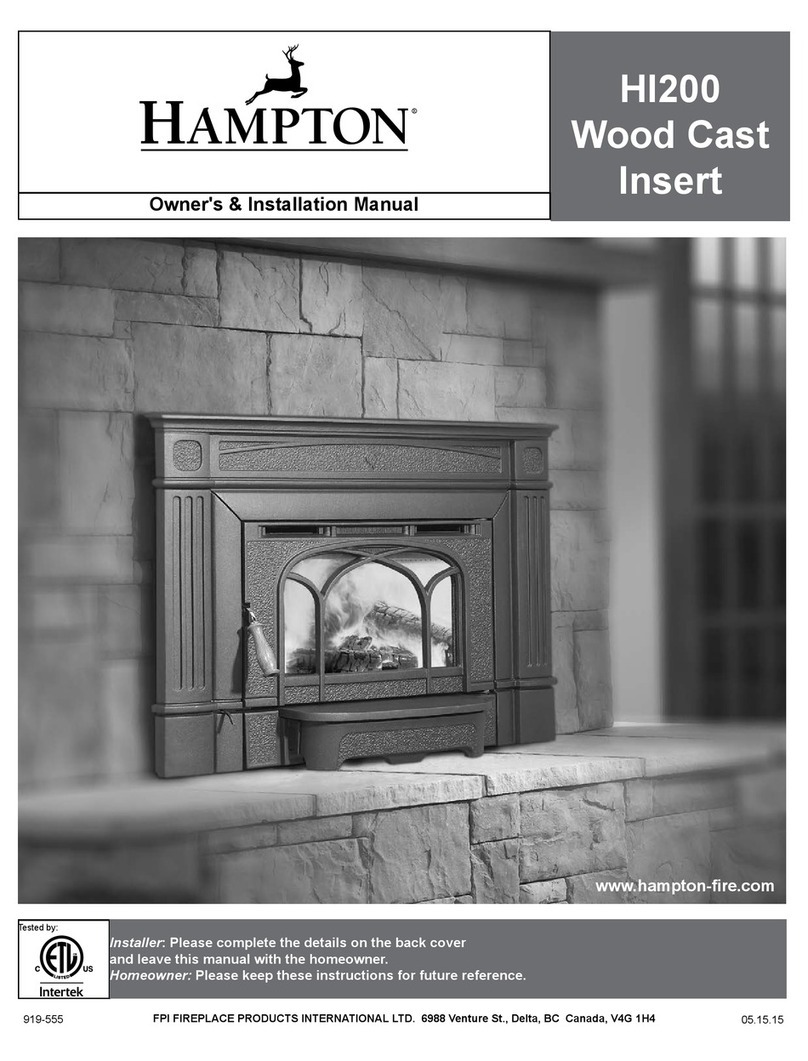
HAMPTON BAY
HAMPTON BAY Wood Insert HI200 Owners and installation manual
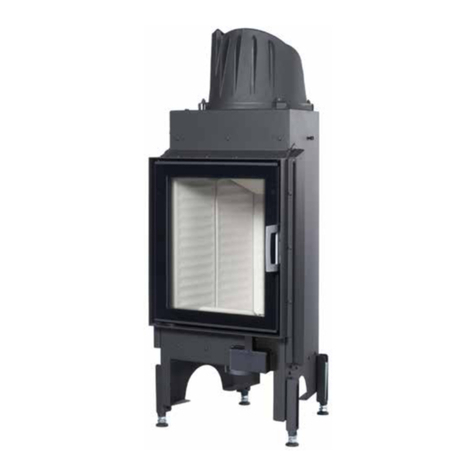
Austro Flamm
Austro Flamm 45x operating manual
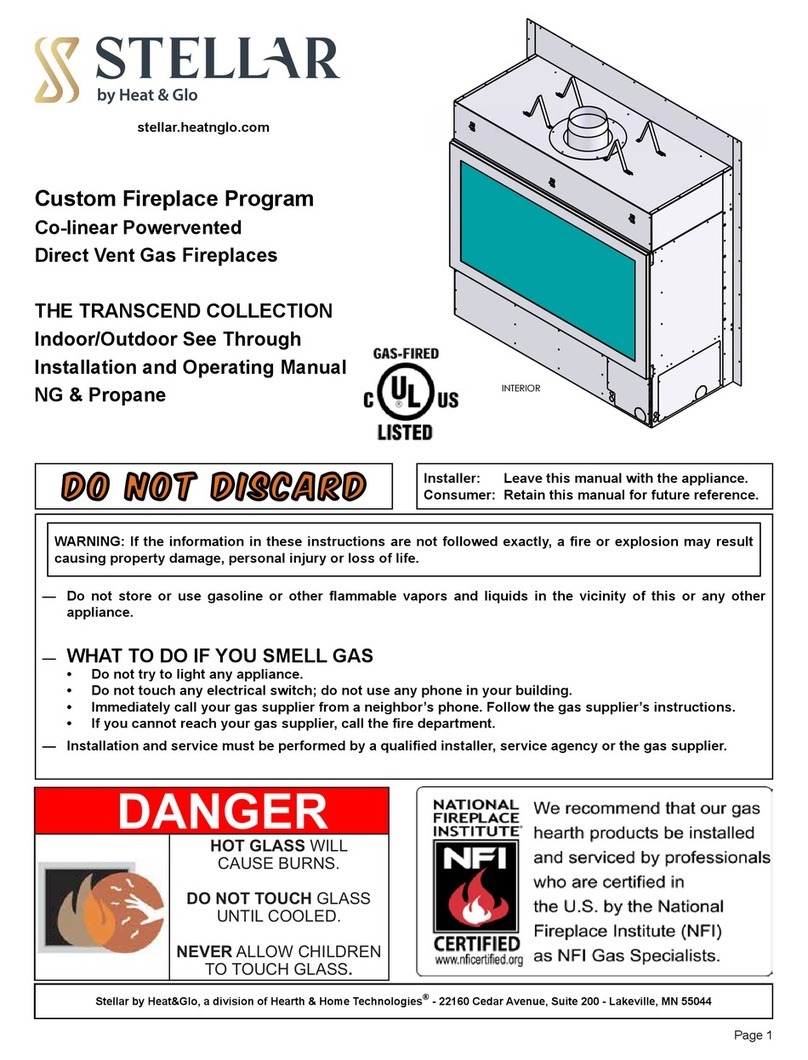
Heat & Glo
Heat & Glo STELLAR 3-IDOD-24-G manual

Heat & Glo
Heat & Glo 350TRSI-AUF owner's manual

RealFlame
RealFlame Carlisle 8230 Assembly instructions

Heat & Glo
Heat & Glo Wood Burning Fireplace HST-48D owner's manual
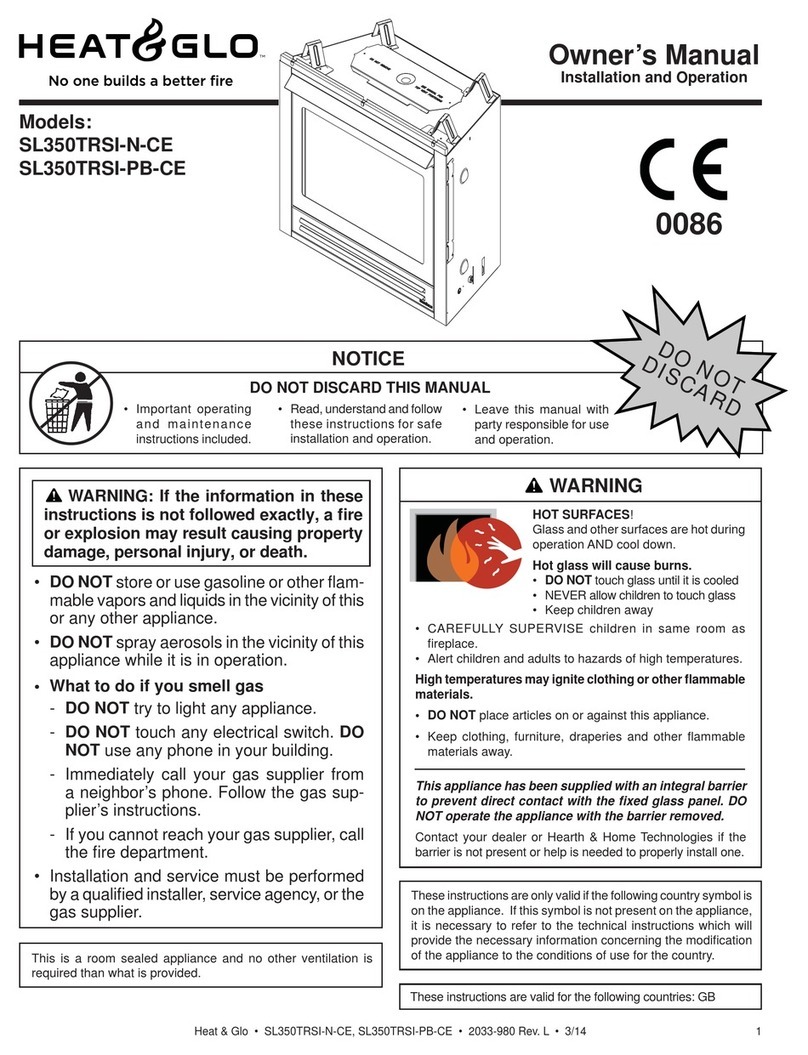
Heat & Glo
Heat & Glo SL350TRSI-N-CE owner's manual

RealFlame
RealFlame 8440 Assembly instructions

RealFlame
RealFlame ELEGANCE 850 Installation & operating manual
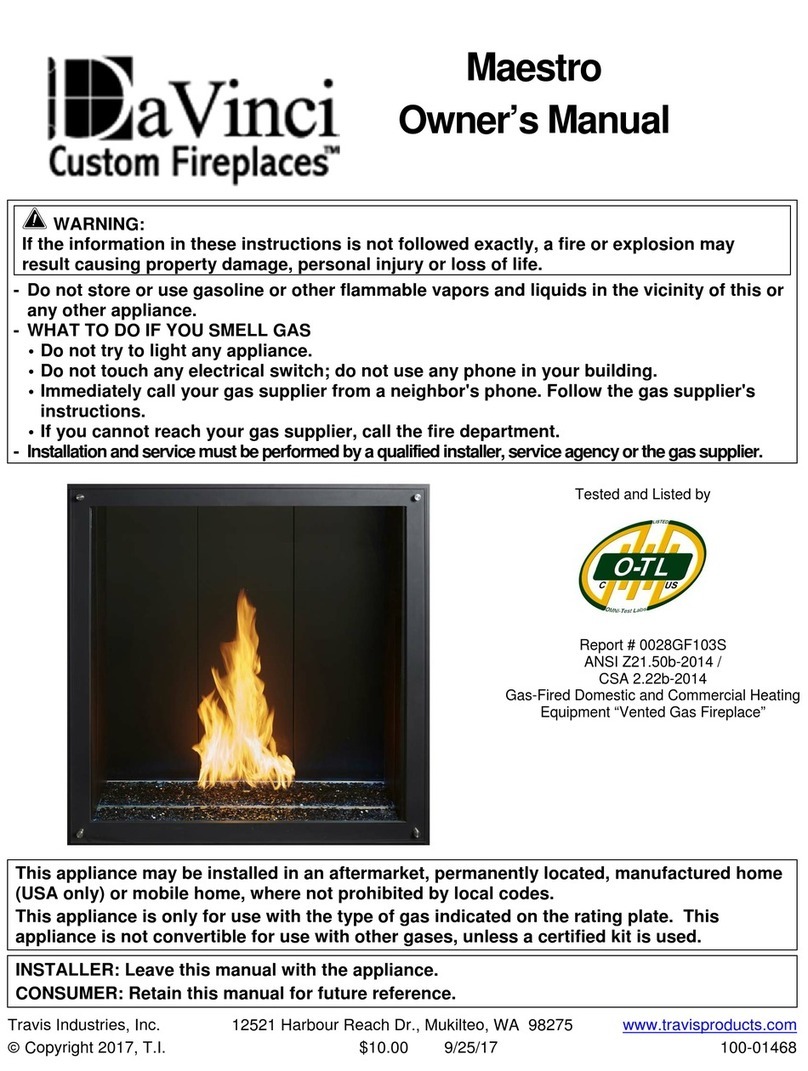
DaVinci
DaVinci Maestro Collection Square owner's manual
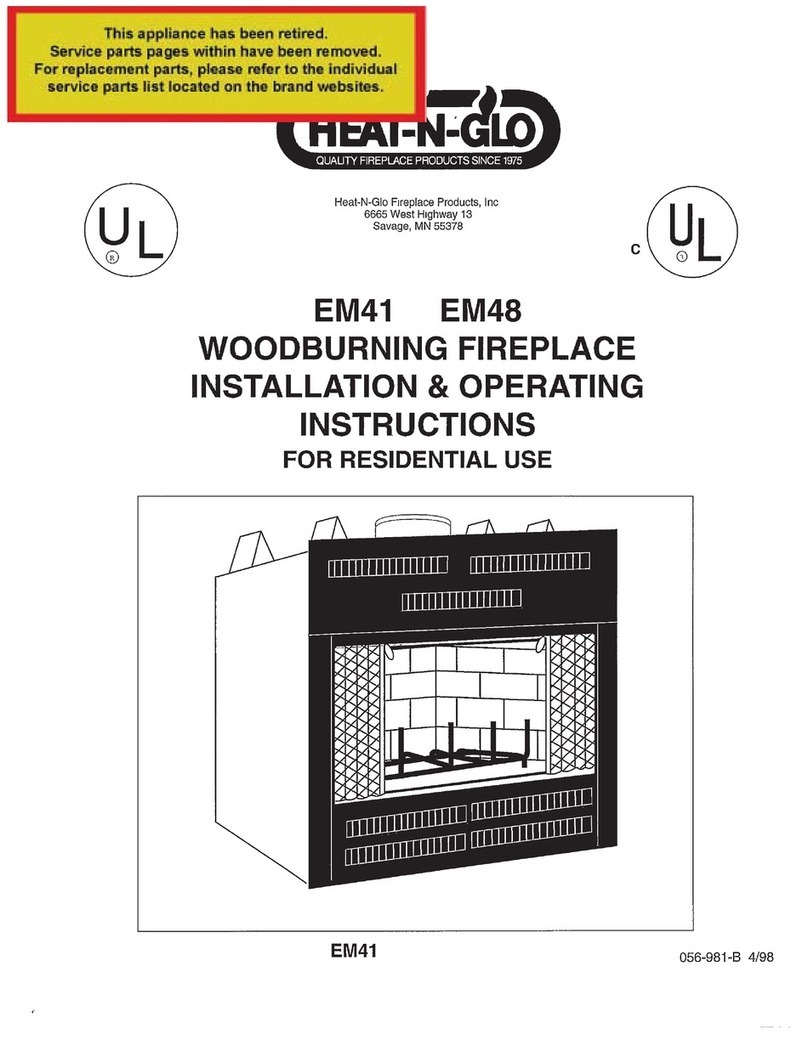
Heat & Glo
Heat & Glo EM41 Installation & operating instructions

